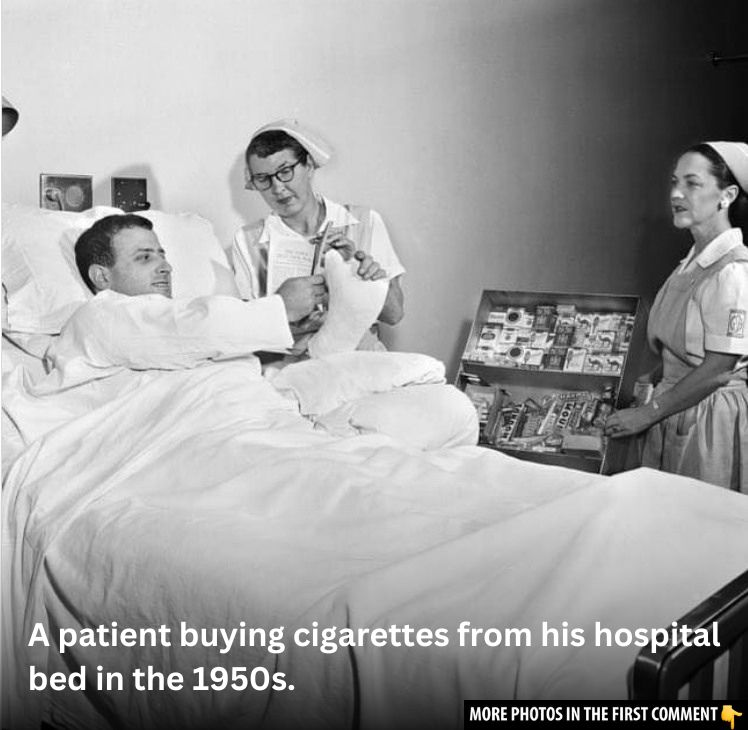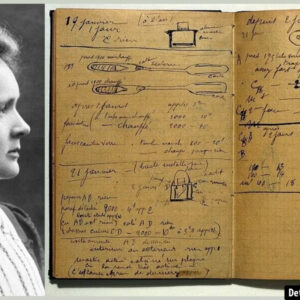In the early 20th century, the world was introduced to a revolutionary form of advertising that would forever change the way people viewed smoking. During this time, tobacco companies, desperate to stave off growing concerns about the dangers of smoking, turned to one of the most trusted figures in society: the doctor. Armed with their white coats, authoritative voices, and persuasive power, doctors were enlisted to lend credibility to cigarette brands. Advertising slogans like “Doctors recommend…” became commonplace in cigarette ads, and the public, conditioned to trust medical authority, followed suit. But what were the implications of such campaigns, and how did they shape the public perception of smoking?
Lucky Strike’s Early Influence: The First Doctors in Ads (1920s)
The story begins with the iconic Lucky Strike cigarette brand. By the 1920s, Lucky Strike had already established itself as one of the leading tobacco brands in the United States. In a bold marketing move, the American Tobacco Company decided to use physicians to endorse its product. A headline from the 1920s proclaimed, “20,679 physicians say ‘Luckies are less irritating,’” suggesting that their cigarettes were less harmful to the throat than others.

This claim was part of an ambitious campaign that sent free cartons of cigarettes to physicians and asked them whether Lucky Strikes were less irritating to the throat. The company’s advertisement also promoted the idea that Lucky Strikes were made smoother due to their “toasting” process, a gimmick that would later be called into question. Nonetheless, this campaign succeeded in building public trust in Lucky Strikes, as many smokers began to believe they were smoking a “doctor-approved” product.
Video
Watch The Dark Truth of Doctors Prescribing Cigarettes and uncover the shocking history behind medical professionals endorsing smoking.
Philip Morris: Pioneering the ‘Physician-Approved’ Claims (1930s)

In the 1930s, Lucky Strike’s dominance faced increasing competition, especially from Philip Morris, which began to implement its own doctor-backed advertising strategy. By linking its cigarettes with purported scientific research conducted by physicians, Philip Morris began positioning itself as a leader in health-conscious smoking. One advertisement boldly declared that after prescribing Philip Morris cigarettes to patients with irritated throats, “every case of irritation cleared completely or definitely improved.”
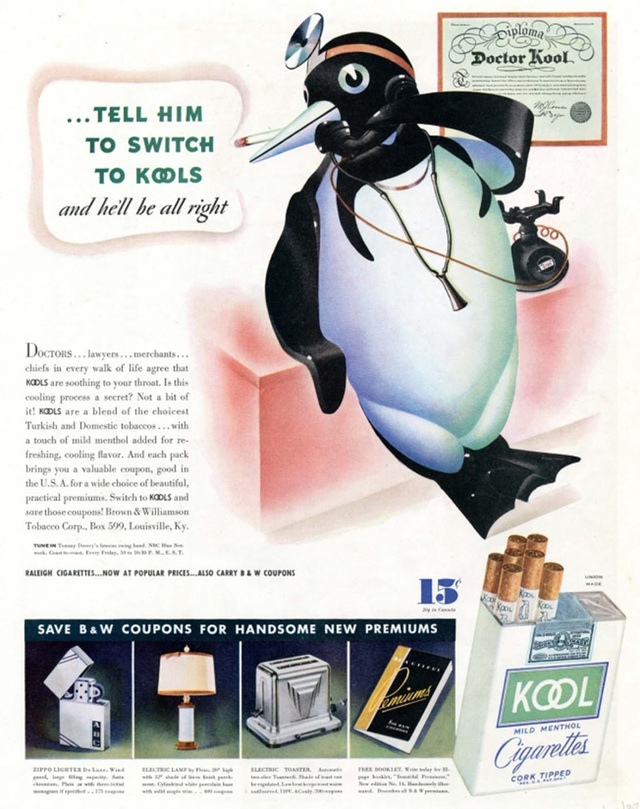
This claim was based on the assumption that some cigarettes caused irritation, but Philip Morris’ cigarettes were different and “healthier.” While the legitimacy of such claims was never fully backed by conclusive evidence, the campaign helped Philip Morris grow in popularity, cementing its place as one of the major tobacco companies of the time.
The ‘More Doctors Smoke Camels’ Campaign by R.J. Reynolds (1930s-1940s)
Perhaps the most famous of all the doctor-endorsed cigarette campaigns came from R.J. Reynolds with its Camels brand. The “More Doctors Smoke Camels” campaign was a nationwide initiative that claimed that a larger proportion of doctors smoked Camels than any other brand. Ads appeared in popular magazines like Time and Ladies’ Home Journal, showing well-dressed doctors either relaxing or speaking with patients while enjoying their Camels. This bold advertising tactic made smoking Camels seem like the responsible choice, associating the brand with professional authority.

The ad’s success stemmed from the trust doctors had with the public. Physicians were seen as knowledgeable and reputable figures, and their endorsement of Camels made the cigarettes seem not only acceptable but desirable. With this ad campaign, Camels successfully positioned itself as the preferred choice among health professionals.
The Physician’s Addiction: How Tobacco Companies Targeted Doctors
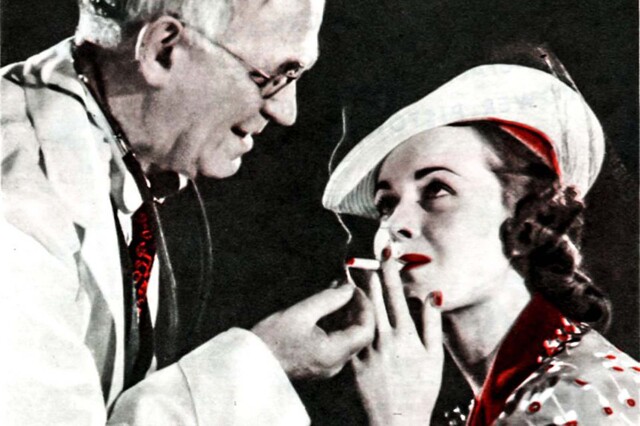
Tobacco companies were not oblivious to the fact that many physicians themselves were regular smokers. It was not uncommon for doctors to smoke, and many doubted the connection between smoking and disease. Tobacco companies, recognizing this, began to target physicians directly, encouraging them to prescribe “healthier” cigarette options to their patients. These ads played into the belief that smoking, while potentially harmful to some, could be manageable for others if the right cigarette brand was chosen.
As smoking was still viewed as a personal choice by many doctors, this strategy ensured that even healthcare professionals continued to use tobacco products. This created an endorsement loop where doctors, themselves avid smokers, would recommend certain cigarette brands to their patients, further legitimizing the companies’ products.
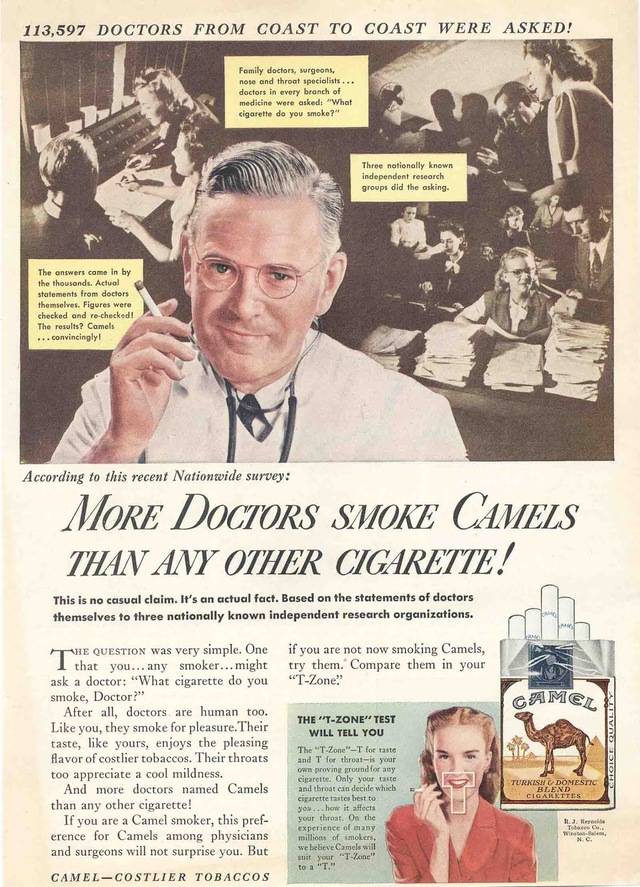
Transition in Advertising: The Shift Towards Consumer Experiences (Late 1940s-1950s)
By the late 1940s and early 1950s, a shift in advertising occurred. Brands like Camels began to move away from doctor endorsements and instead focused on the consumer experience. Advertisements like “Try it for yourself!” began to replace those featuring doctors. This change reflected a broader societal shift as the public began questioning the credibility of the earlier health claims. Although doctors were still featured in ads, the emphasis shifted to how smokers enjoyed the cigarettes personally.


The inclusion of phrases like “Every Camel tasted so good!” reflected a consumer-driven market, one where people were now encouraged to judge the quality of cigarettes based on their own experiences, rather than solely on professional endorsements. This was a clever marketing strategy, but it also marked a turning point in the evolution of tobacco advertising.
Scientific Revelations: The Decline of Doctor-Endorsed Tobacco Ads (1950s and Beyond)
By the mid-1950s, new research started to emerge that confirmed a link between smoking and lung cancer. The tide began to turn against the tobacco industry as the public became increasingly aware of the health risks associated with smoking. As a result, the doctor’s image in cigarette ads began to fade, and the ads themselves started to take on a less authoritative tone.
The gradual disappearance of physician endorsements in tobacco advertising coincided with the growing push for public health awareness regarding the dangers of smoking. The 1950s marked a critical period in which tobacco companies could no longer hide behind the credibility of doctors. As scientific evidence mounted, more and more people rejected the idea that smoking was harmless, despite decades of marketing suggesting otherwise.
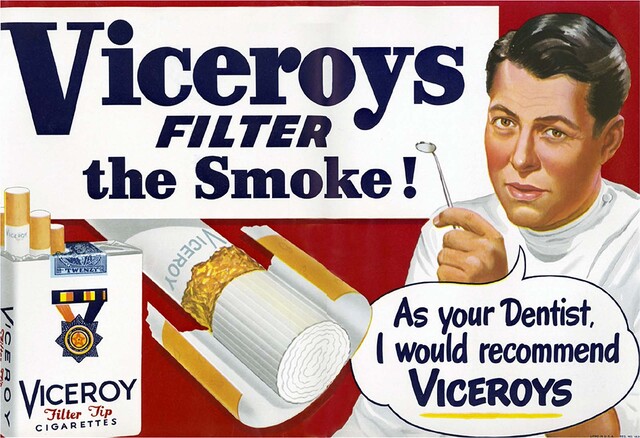

Cultural Impact: The Legacy of Doctor-Endorsed Tobacco Ads
The legacy of these doctor-endorsed tobacco advertisements is still felt today. Not only did they shape how the public viewed smoking, but they also contributed to the normalization of tobacco use, even within the medical community. In some ways, these ads blurred the lines between health expertise and marketing, leading to a significant loss of public trust in the integrity of health-related advertising.
The impact of these campaigns can also be seen in the way tobacco companies tried to combat public health movements in later years. Tobacco giants spent millions on public relations efforts and legal battles to deny or downplay the dangers of smoking, reflecting the long-lasting effects of their earlier success in associating cigarettes with health professionals.
Video
Watch the 1950s Camel Smoking Advert and step back in time to see how cigarettes were marketed during that era.
Conclusion: The End of an Era and the Path to Modern Advertising
The era of doctor-endorsed tobacco ads came to a close in the late 1950s as the medical and scientific community increasingly acknowledged the risks of smoking. As more people became aware of the dangers, tobacco companies were forced to adapt their advertising strategies. In the 1970s, tobacco advertisements were banned on television and radio, and today, cigarette ads are highly regulated, with strict limitations on health claims and imagery.
However, the impact of those early campaigns is undeniable. They not only shaped the tobacco industry but also left a lasting imprint on the way advertising influences public opinion. The story of doctor-endorsed cigarette ads is a reminder of the power of marketing and its ability to shape perceptions, even when those perceptions come at the cost of public health.
